Crete Travel Guide 2023
Fringed by wide sandy beaches and gas-blue waters, Crete is one Greece's most popular holiday islands.
Not that its tourist income is strictly necessary - since Crete is one of the few Greek islands that could support itself, thanks to its highly productive agricultural land (including plenty of vineyards). But the tourist euros, pounds and dollars are still welcome.
Travelling to Crete? Get advice on where to stay and what to do on Greece’s largest island - with our complete guide.
Most of the island's northern resorts cater to younger, rowdier crowds from Germany, France and the UK, lured by the beaches, the pulsating nightclubs and the cut-price drink.
However, those seeking a quieter Greek getaway have plenty to enjoy, too. Head west towards Chania and other out-of-the-way areas on the south coast and you'll discover many peaceful villages barely touched by tourism. And that goes double for the mountain-blessed interior.
Is it safe to travel to Crete?
Crete is considered a safe place to visit - especially outside the cities, where the crime rate is very low.
Gov.uk states, “British nationals usually make over 3 million visits to Greece annually. Most visits are trouble-free.” However you should exercise normal caution when visiting, and ensure you have comprehensive travel insurance in place before you leave the UK.
Climate and best time to visit Crete?
The weather is almost perfect for summer getaways, with reliable sunshine well into October, and swimmable seas even in November.
The only catch is a strong northerly wind called the meltémi, which is most powerful in August (which together with the heat and crowds, is a reason to sidestep this month).
Cretan History
Crete is home to Europe's earliest civilisation - the Minoans - who managed a trading empire as early as 2000 BC.
Over the centuries, Greeks, Romans, Saracens, Byzantines, Turks - and finally Germans - have occupied the island.
Indeed, Crete was the first place to be successfully invaded by paratroopers in World War Two, with the Fallschirmjäger displacing British and Allied troops.
The Germans began returning in the 1970s - this time in search of beaches, margaritas and nightclubs!
Cretans love to party
It's not only sozzled northern Europeans who like to party on Crete - the Cretans do too.
Indeed, every occasion is a valid excuse for a shindig, often involving juicy snails harvested from the mountains, olive oil and home-grown vegetables. And best of all, these affable locals are prone to invite almost anyone along to join in the fun (that includes you!).
How to get around Crete?
Unless you're happy staying at a resort for your entire trip, you'll need a hire car to get around Greece's largest island.
In Heraklion Airport you'll find rental firms falling over themselves to rent you some wheels for your holiday stay in Crete.
Cretans love to bargain, so you'll need to play along if you want the best rental deals. €22-€33 (£20-£30) per day is a reasonable price - although you might get this down further if you want a vehicle for more than three days.
Note that fuel prices on Crete are even higher than the mainland (at time of writing more than £2 per litre), so it's a good idea to plan your route out beforehand.
Scooter?
Another option is hiring a scooter.
Getting around the capital Heraklion and its surroundings on two wheels is easy and fun, since the roads are relatively well maintained.
However, exploring further afield by scooter would involve a rather bumpy ride, since many Cretan roads are unsealed.
Things to do in Crete?
Heraklion Museum
Get a grounding in Crete's rich history and the island will surely come alive for you.
The best way to do this is by visiting the Heraklion Museum.
Highlights among the archaeological delights found at the Heraklion Museum are the stunning Malia bee pendant (found in a tomb in 1930 and dating between 1800-1650 BC), Kamares tableware, and a number of fabulous Minoan frescoes.
Venetian harbour, Heraklion
Heraklion itself is worth exploring for a day or two.
The Venetian harbour is one of its key attractions, and includes Koules Fortress (1523–1540), plus shipyards, restaurants, bars and shops.
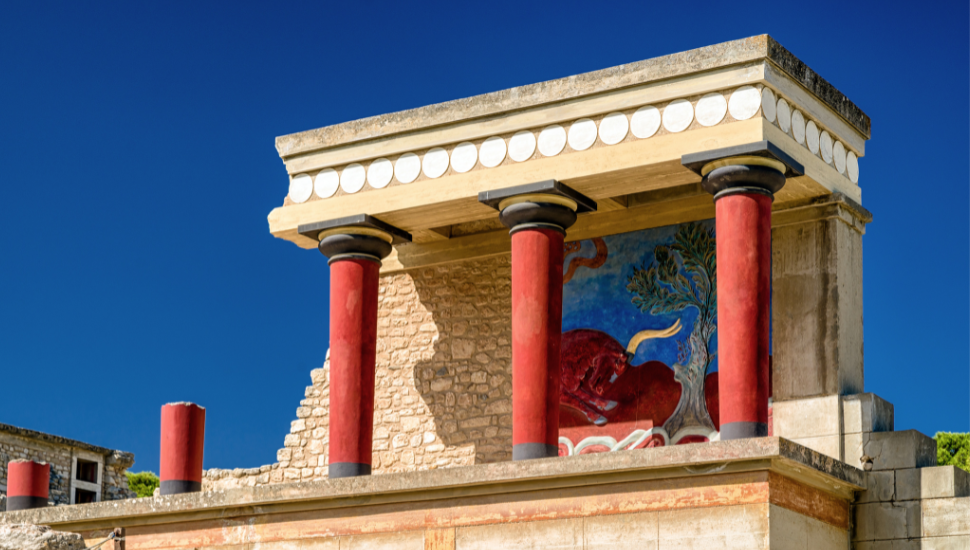
Knossos Palace ruins
You can save money by buying a Heraklion Museum/Knossos Palace combi ticket, then head inland through the fragrant olive groves to the ruined palace.
Part of the palace was - controversially - restored by Arthur Evans. And while the jury is still out on whether it should have been done or not, it certainly brings the place alive.
Legend has it both the mythical King Minos and the terrifying minotaur called Knossos home.
It was also the setting for the tale of Daedalus and Icarus, and of the labyrinth.
It's worth getting a guided tour, since there are very few information displays across the site.
Nikos Kazantzakis Museum
Learn about Crete's literary great, Nikos Kazantzakis, in Myrtia at this fantastic little museum.
Alongside rare photos, you can get your hands on some great souvenirs.
If you find the novelist especially interesting, you might visit his tomb in Heraklion's lofty cemetery.
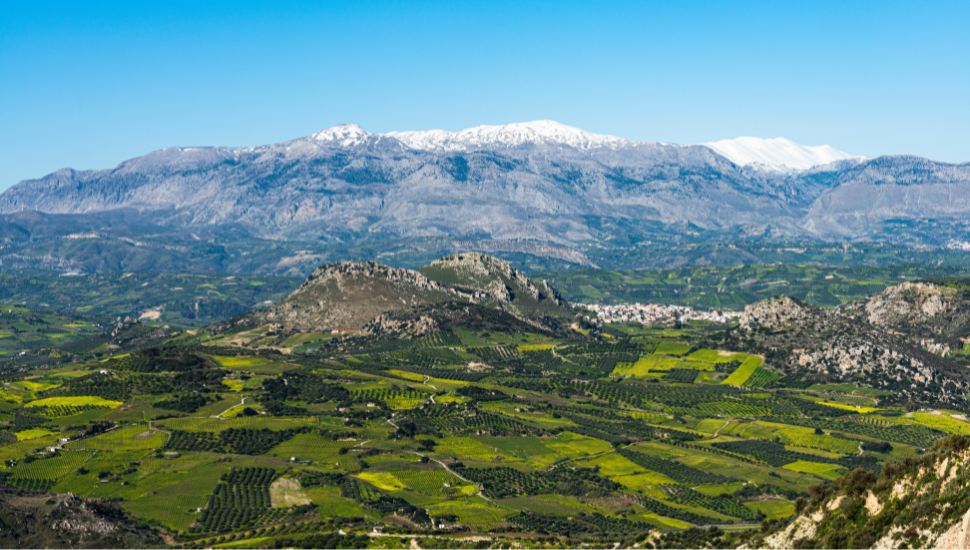
Dafnes wine region
Located a short drive from Heraklion in the island's interior, Defnes wine region is where 80% of Crete's wine is produced.
Cool winters and long dry summers, together with reliable Mediterranean sunshine, make Defnes ideal for growing wine grapes. Incredibly, wine was being produced here 4,000 year ago.
For wine lovers, a tasting session in Dafnes town is a must. This surprisingly affordable experience sees you sample some of Crete's finest wines in a beautiful setting.
Adrenaline sports
Crete’s varied landscape is ideal for all manner of adventure sports, from trekking to canyoning, horse riding to bungy-jumping.
Below are some well-regarded providers:
- Hiking: Hiking Crete
- Canyoning: Cretan Outdoor Adventures
- Horse Riding: Zoraida's Horseriding
- Bungee jumping: Liquid Bungy
- Cycling and walking: Alpine Travel
Hiking Crete's mountains
Crete is home to more than 30 summits over 2,000m, and numerous smaller mountains and hills - making it a great hiking location no matter what your level of fitness or experience.
Lefka Ori (White Mountains)
Among the most dramatic of hiking spots is the Lefka Ori (White Mountains), with the fabulous 2,080m Gingilos peak.
Despite its height, it is actually fairly easy to reach, since you begin high up near the entrance to Samariá Gorge. However, such easy access means more tourists, but fitter hikers will soon leave fellow visitors behind!
It takes just five hours to summit on Gingilos, thanks to the well-maintained path. However, attempting the route in bad weather is considered dangerous.
In Greek mythology, the peak is where Zeus created a heavenly palace. Today it rewards hikers with spectacular views over the Aegean and Libyan Seas, as well as the west of Crete.
Tripiti Gorge to Sougia
Another superb hiking route is Tripiti Gorge to Sougia (or vice versa). It's one of the Mediterranean's most breathtaking coastal walks, and takes you past the ruins of a Venetian fortress and the chapel of Prophet Elias.
To access the path, you'll need to arrange a boat to Tripiti (or from Tripiti if you begin your hike from Sougia).
It takes around four hours to complete and can be very hot in summer - so do bring along a hat and sunscreen.
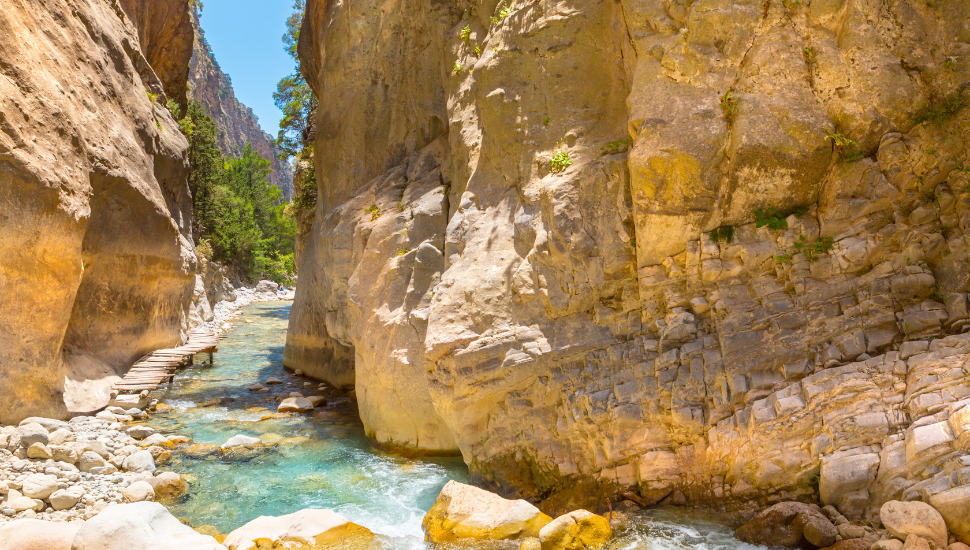
Gorgeous gorges
Samariá Gorge
Samaria Gorge is Crete’s most famous, and gets rather busy as a result.
Many tour operators run trips to the gorge, which offers an easy - if long - walk of five-to-seven hours. It hems you in with 1,000ft walls on either side.
If you don't go with a tour, you can simply hop on a bus from Chania, and pay €5 to enter the national park (a small price for such an amazing experience).
Richtis Gorge
If you prefer your gorges with more vegetation, consider visiting Richtis Gorge.
To reach Richtis Gorge, drive 15 minutes from Sitia in the east to the tiny village of Exo Mouliana, then follow the well-marked path.
On the way you'll see crumbling ruins, mystical looking waterfalls and untouched forests.
You'll complete the walk at a pretty beach, which is usually deserted.
You're also sure to see many colourful butterflies and flowers along the way.
The route is passable for most of the year, but you may get your feet wet when crossing the river.
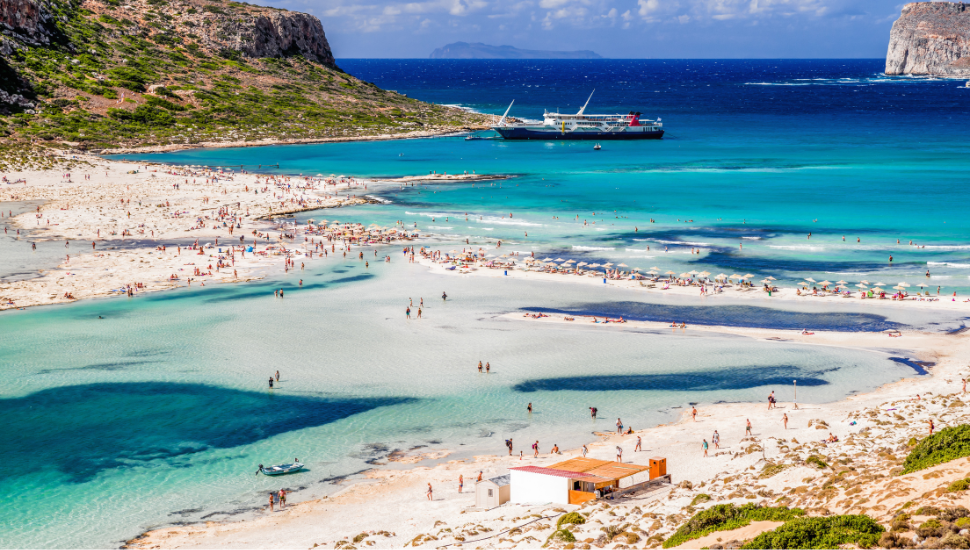
Best beaches in Crete?
With 650 miles of coast, it's little wonder Crete is blessed with so many beaches.
Many are found around Chania, including the Caribbean-esque Balos beach, which is arguably one of the top attractions in all of Crete.
Balos Beach
Offering breathtaking panoramic views, Balos is one of the finest beaches in Greece, let alone Crete.
You can visit Balos by ferry from the nearby port of Kissamos, or by car following a dirt road. The latter route is not suitable for scooters.
This stunning, wild coastal area has enough to see and do for a full day.
Parts of Balos beach also comprise Crete’s unique pink sand.
Elafonisi Beach
72km to the southwest of Chania is the castor-sugar sand of Elafonisi beach.
As popular now as it was centuries ago, Elafonisi has all the accoutrements of a tourist hot spot: umbrellas, showers, lifeguards, snack bars and changing rooms.
As pretty as this beach is, it can get rather crowded in high season.
Falassarna Beach
For a little more peace and quiet, head for the long stretch of sand known as Falassarna beach, also in western Chania.
Matala Beach
Another superb beach to visit in Crete is Matala, 68km southeast of Heraklion (around one hour’s drive).
Matala is something of a hippie town, and boasts some stunning cave and rock formations. Some of these caves were purportedly carved out as graves for Roman and Christians many centuries ago. Others appear to have beds, stairs and windows carved out of them, suggesting they were inhabited.
A small fee of 4 euros is payable to access these caves.
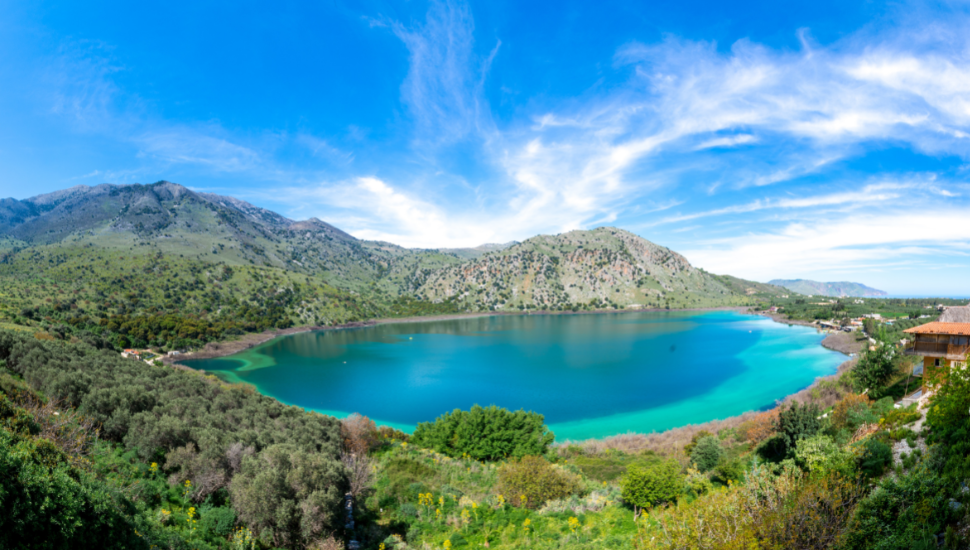
Other popular places to visit when holidaying in Crete?
Kournas Lake
Steeped in mythology, the stunning Kournas Lake offers a great location for a day of boating/kayaking and sunbathing.
There's plenty of parking, but it's a good idea to go early so you get the lake more or less to yourself.
In fine weather you'll be rewarded with spectacular reflections in the water.
Another advantage of going early is that, with fewer other boats on the water, you'll see the many eels who call Kournas their home. Alongside eels, you'll see plenty of turtles and goldfish in the crystalline waters.
When you're done watching the wildlife, you can enjoy a swim in the lake, before heading to shore for a drink and snack in one of the tavernas.
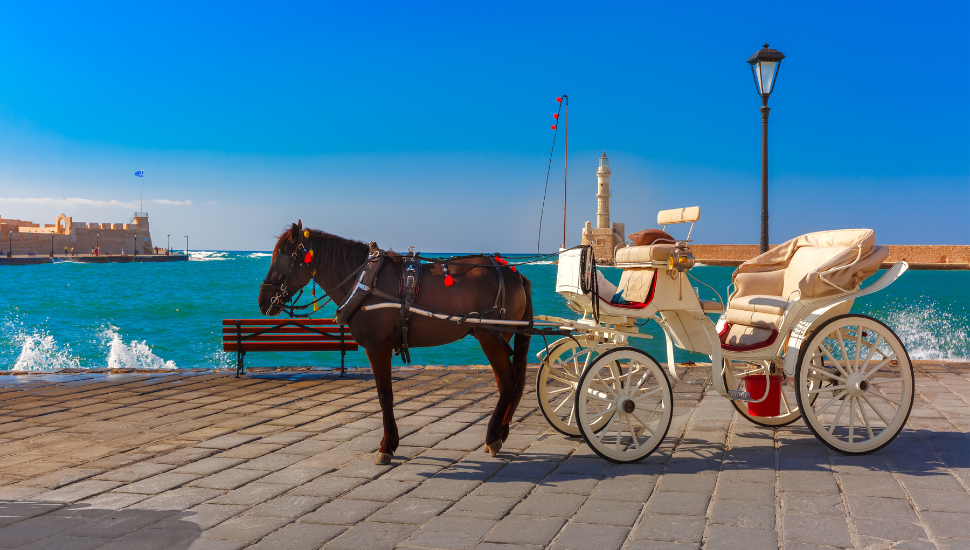
Chania city
The city of Chania is a great base from which to explore many of Crete's highlights.
This northwest coastal city is an attraction in its own right, best known for its 14th Century Venetian harbour, narrow streets and excellent waterfront restaurants.
The city transports you back in time, giving you a tangible impression of what life was like here many centuries ago.
Three days in Chania is sufficient to see all the main sights - but many visitors stay longer if they can, such is the city's laidback, charming atmosphere.
Star Beach Bungee and Star Beach, Hersonissos
Let's face it - not everyone who visits Crete will be going in search of ancient ruins and untouched forests. Many visitors go for the buzzing nightlife and adventure sports - and a great example of the latter is Star Beach Bungee, which has been "jumping safely since 1994" - using a specialised crane.
Jumpers should be at least 35kgs, and those aged under 18 must have a legal guardian present.
It costs 60 euros, but a second jump is only 30 euros, and a third 20!
If bungy jumping isn't for you, there's plenty of partying to be done on the beach itself, aimed at the 18-30 crowd. That said, families often stay at Star Beach - attracted by the beautifully landscaped beach area, waterpark and shallow beach waters (ideal for the kids).
You can also get a massage on the beach for 40 euros (45 minutes), and rent a sunlounger (4 euros) and umbrella (3 euros).
Additionally there are plenty of trendy poolside bars, equipped with very bassy sound systems, where you can grab a cool drink.
Accommodation: Where to stay on Crete?
Crete remains an affordable destination for sun seekers, and this is reflected in the hotel prices.
You can book a 3-star hotel for as little as £20 a night, nearly always with a pool. Even cheaper deals are available if you book your Crete holiday as a package - inclusive of flight, meals, drinks and snacks.
Crete: Best places to stay?
At the other end of the spectrum are a host of opulent 5-star hotels, such as the Amirandes Grecotel Boutique Resort, with pool and spa (from around £280 per night); and the Creta Maris Beach Resort (from £440 per night).
Eating out in Crete
Want to save money on your food costs? Make regular beelines for the local tavernas - local eateries that serve the same dishes as the touristy restaurants, but for much less.
Here are a few must-try Cretan dishes:
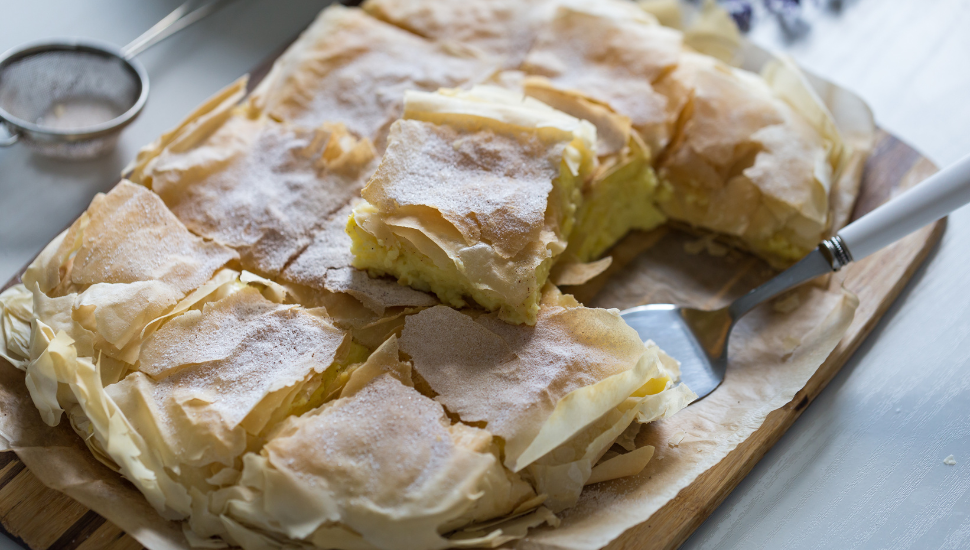
Bougatsa
Bougatsa is a crispy handmade pastry, usually eaten for breakfast.
The filo pastry is filled with mizithra cheese (see below), sometimes covered with cinnamon.
Cretan goat/sheep cheese
Among the many cheeses available, the graviera stands out: a hard, sweet, nutty number.
The creamy AOC-protected pichtogalo chanion is also a must-try, as is the delightfully mild mizithra.
Dakos
Comparable to bruschetta, dakos is a bowl of barley rusks soaked in olive oil, topped with fresh sliced tomato and salad - and finished with (yes, that’s right) creamy mizithra cheese.
A light-but-filling snack to fuel your Cretan adventures.
Lamb with stamnagathi
The Cretan take on lamb involves sauteing the meat in olive oil and oregano, and served with stamnagathi - a wild green that grows in abundance here.
Indeed, stamnagathi is on-trend in the island's finer eateries.
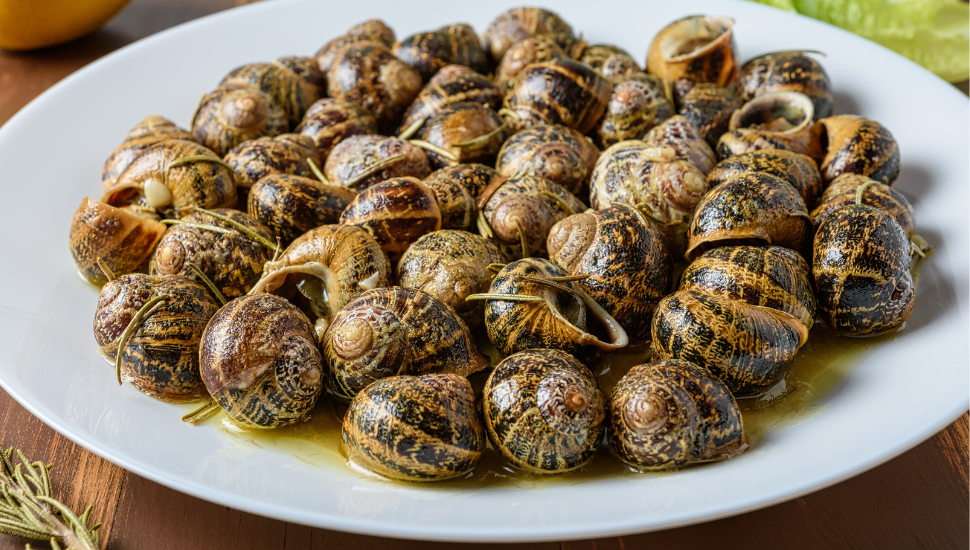
Fried snails (Chochlioi boubouristi)
Like the French, Cretans love little more than to tuck into a bowl of fat fried snails.
Considered a delicacy, the snails are fried in flour and hot olive oil, then drizzled in vinegar or wine.
These hand-collected specialties are cooked alive!
Cretan Cheese Pies (Kalitsounia)
Cretan cheese pies differ from their mainland counterparts by combining savoury and sweet.
The savoury comes in the form of creamy cheese such as mizithra or malaka, (but not feta), while the sweet comes from honey on top.
Some pies have a hint of rosewater.
Gamopilafo
If you know your Greek you'll have spotted the root of this word (gamos) means wedding - so it's no surprise it served at nuptials island-wide.
This rich rice-based dish is founded on a meat broth made from lamb, goat or rootster, and finsihed with lemon juice and stakovoutiro - a butter made from the skin that develops on boiled goat's milk.
Olives
Just as elsewhere in the Mediterranean, olive growing is big business in Crete - but the island grows some very special varieties, including Manolis and Seliniotikes.
Get a Quote